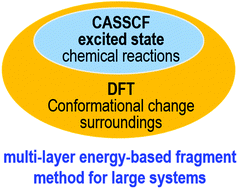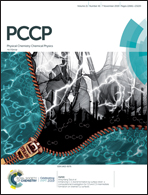A multi-layer energy-based fragment method for excited states and nonadiabatic dynamics†
Abstract
We developed a multi-layer energy-based fragment (MLEBF) method within the many-body energy expansion framework. It supplies accurate energies and gradients, and accurately reproduces excited-state topological structures. Moreover, MLEBF-based nonadiabatic dynamics simulations give nearly the same results compared with full ab initio ones. The present work could stimulate developing energy-based fragment methods for photochemistry of large systems.

- This article is part of the themed collection: 2019 PCCP HOT Articles


 Please wait while we load your content...
Please wait while we load your content...